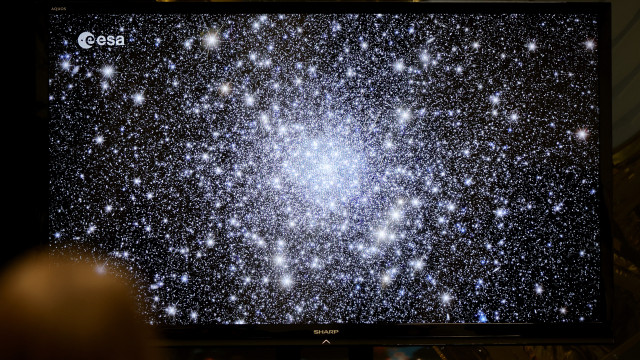Scientists are trying to melt a thin layer of ice that is increasingly obscuring the view of the Euclid space telescope, which is a "detector of the dark universe", the European Space Agency (ESA) announced.
It's another of several technical setbacks for the telescope, which launched into space in July on a mission to map a third of the sky.
In doing so, ESA hopes that Euclid will reveal more about the nature of dark matter and dark energy, which are thought to make up 95% of the universe but remain shrouded in mystery.
During the inspections in November, the team on the ground first noticed that it was losing some light entering the telescope's visible light camera, Ralph Kohli, the Euclid instrument's operations scientist, told AFP.
After looking at the data, they believe the problem is a layer of ice — thought to be as wide as a strand of DNA — that builds up on the telescope's optical surfaces.
"It's a big problem," Kohli admits.
But researchers are working on it, Kohli said, adding that he has no doubt that Euclid will be able to complete its mission.
Water protection is a common problem for all spacecraft.
Despite Earth's best efforts, a small amount of water ingested during spacecraft assembly on Earth can sneak into space.
Faced with the cold vastness of space, water molecules freeze on the first possible surface - in this case, some of them may have landed on Euclid's mirrors.
Thin ice
Shortly after the telescope's launch, scientists used its onboard heaters to heat everything in the spacecraft, hoping to blow away any water.
This could happen again.
"But heating everything up is very mission-destructive," Kohli said.
Since heat expands most materials, warming the entire spacecraft requires careful recalibration.
It will take at least a month for the telescope to return to its work of surveying the sky, Kohli added.
So last week, the ESA began heating just two of the telescope's mirrors, raising the temperature enough to hopefully melt the ice.
This "minimally invasive" partial warming will continue until Thursday, March 21.
Scientists may not know if it works by mid-April. Part of the problem is that scientists don't know exactly where the ice accumulates — or how much of it there is. Even if scientists manage to melt the ice, it may return over time.
If the partial rewarming plan fails, ESA will have to rewarm the entire spacecraft. If the team had to do this every year during the telescope's planned six-year mission, it could lead to a six-month delay.
"For now, we have to wait and see - and hopefully we can get rid of this problem in a more elegant way," emphasized Ralph Kohli.
This is not the first problem for Euclid.
Previously, cosmic rays messed up the spacecraft's fine-tuning sensor, necessitating a complex software update.
Some unwanted sunlight also interfered with his observations, a problem that was solved by rotating the telescope slightly.
However, nothing can be done about particularly strong solar flares that occasionally project X-ray images onto the visible camera.
Euclid, which ESA calls its "dark universe detective," officially began its investigation last month. Its first images, published in November, revealed swirling, colorful galaxies in deep space. /BGNES







